Solutions to Assignments
MCO-06 - MARKETING MANAGEMENT
Master of Commerce (Mcom) 2nd Year
Question No. 4.
Differentiate between the following:
(a) Product and Production concept of marketing
On the other hand, the production concept means that a brand or firm has to concentrate on products that can generate the most accurately. Low-cost products would produce by firms and it is believed that this cost will drive the demand for the product.
Product vs Production Concept
The main difference between Product and Production Concept is that the concept of the product is to create a good quality item/product which should be reliable along with unique features for the consumers. The concept of production is to make the product available in the market at an affordable price.
Comparison Table Between Product and Production Concept
| Parameter of Comparison | Product Concept | Production Concept |
|---|---|---|
| Preference of Consumers | Products that offer the best quality, performance, and creative specifications are preferred by consumers | Products that are broadly available and inexpensive are preferred by consumers |
| Meaning | Improvements in quality products | Easily accessible products |
| Business Goal | To enhance the quality of the product, creating new features, etc. | To enhance the quantity of production and to reduce the average cost. |
| Profit | Gets profit by providing a good quality product | Gets profit by expanding large scale production |
| Priority | Gives priority on the product | Gives priority on the production |
What is the Product Concept?
The meaning of Product Concept is that customers or consumers prefer a product that offers the best quality, performance, and features. In order to deliver the best possible product to the customer as per their requirement and expectation, this concept is a necessary one.
To achieve success, a product is not going to be complete by itself and it will need other factors such as- business-like marketing, delivery, sales, service, etc.
A firm or company can create an identity of the product and also can add practical value and advantages by using the Product concept. As a result, the expected customers can collect this benefit and sooner or later they will buy the product in the market.
Towards the market, the product concept is known as one of the orientations & marketing approaches that can be followed by a company.
The other strategies are Selling Concepts, Production Concepts, and Marketing Concepts, etc. Pull Marketing is created because of better products that provide aid in the success of the brand. And every creative innovation helps to get new products with features which will attract more customers.
For example, Apple is one of the companies that focuses extremely on their product concept to deliver the best products to their customers. Their products are considered to be of high quality with ingenious features and tremendous accomplishments. So, consumers want to purchase the products of Apple and that generates a pull marketing.
Therefore, this is the proper definition of the Product Concept along with its overview.
What is the Production Concept?
The production concept can be called a very effective organizational adjustment than any of the lists of other marketing concepts. It says the actual truth about how humans will prefer products that are inexpensive and can be easily found.
In the mid1950s this concept was discovered during the time of production era of early Capitalism. In that time, organizations concerned themselves principally with creation, assembling, and effectiveness issues.
Also, during this time, the ‘Says Law’ was developed with the idea of supply and demand. The actual thought behind this concept is that to maximize profitability and scale, businesses will always prefer to generate extensively cheap products in maximum volumes.
The owners of these businesses believe that customers are initially interested in product availability and low prices. In this way sometimes customer’s needs might not be fully addressed.
This kind of attempt is apparently most productive at the point when a business works in high development markets or where the potential for economies of scale is noteworthy.
Main Differences Between Product and Product Concepts
- In the product concept, even if the price of the product is high, a good quality product will sell itself. On the other hand, in the production concept, if the firm produces in bulk amount, the cost of production will be less, and so it will attract the customers for its low cost and will be easily sold.
- In the product concepts, consumers will always want the products that offer the most value in quality, performance, and innovative features. And in the production concepts, consumers will favor products that are available around them and are budget-friendly.
- The product concept can be followed by customers through the improvement in the product. Under other conditions, the production concept will be followed by upgrading the amount of product effectiveness and distribution coverage.
- The goal of the product concept is providing good quality rich products, with creative features and outstanding performance to the customers. And production concept targets at accomplishing economies of scale, through a major number of production and improving the supply chain.
- In a product concept, the product usually gets the utmost preference, and in the production concept, the production of goods will be given top priority.
- In the product concepts approach, the advancement of the product in terms of its features, performance, and quality are the means to achieve the end goals. In production concepts, maximizing projects, production should be done on a large scale which will make sure obvious availability and affordability of the product.
- A product concept is known as the thought for an item or product. And a production concept is known as the concept of conceiving to create the product.
- The production concept is useful for the companies when the demand for a product outruns the supply, and the cost of the product is too high. The product concept is nothing like that.
(b) Micro environment and Macro environment
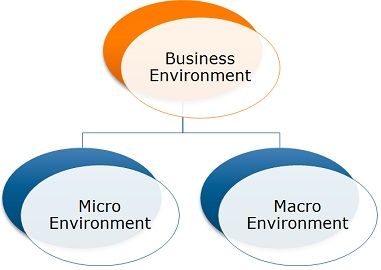 Every business organization is a part of the business environment, within which it operates. No entity can function in isolation because there are many factors that closely or distantly surrounds the business, which is known as a business environment. It is broadly classified into two categories, i.e. microenvironment, and macro environment. The former affects the working of a particular business only, to which they relate to, while the latter affects the functioning of all the business entities, operating in the economy.
Every business organization is a part of the business environment, within which it operates. No entity can function in isolation because there are many factors that closely or distantly surrounds the business, which is known as a business environment. It is broadly classified into two categories, i.e. microenvironment, and macro environment. The former affects the working of a particular business only, to which they relate to, while the latter affects the functioning of all the business entities, operating in the economy.
While microenvironment has a direct impact on business activities, the macro environment is a general business environment, which influences all business groups at large. It is important to learn the business environment, so as to understand the effect of various forces on business. Take a read of the given article to know the difference between microenvironment and macro environment.
Comparison Chart
| BASIS FOR COMPARISON | MICRO ENVIRONMENT | MACRO ENVIRONMENT |
|---|---|---|
| Meaning | Micro environment is defined as the nearby environment, under which the firm operates. | Macro environment refers to the general environment, that can affect the working of all business enterprises. |
| Elements | COSMIC, i.e. Competitors, Organization itself, Suppliers, Market, Intermediaries and Customers. | PESTLE, i.e. Political, Economic, Socio-cultural, Technological, Legal and Environmental. |
| Nature of elements | Specific | General |
| Are these factors controllable? | Yes, but to some extent only | No |
| Influence | Directly and Regularly | Indirectly and Distantly |
Definition of Micro Environment
Microenvironment refers to the environment which is in direct contact with the business organization and can affect the routine activities of business straight away. It is associated with a small area in which the firm functions.
The microenvironment is a collection of all the forces that are close to the firm. These forces are very particular for the said business only. They can influence the performance and day to day operations of the company, but for the short term only. Its elements include suppliers, competitors, marketing intermediaries, customers and the firm itself.
- Suppliers are the ones who provide inputs to the business like raw material, equipment and so on.
- Competitors are the rivals, which compete with the firm in the market and resources as well.
- Marketing intermediaries may include wholesalers, distributors, and retailers that make a link between the firm and the customers.
- Customers / Consumers are the ones who purchase the goods for their own consumption. They are considered as the king of business.
- The firm itself is an aggregate of a number of elements like owners like shareholders or investors, employees and the board of directors.
Definition of Macro Environment
The general environment within the economy that influences the working, performance, decision making and strategy of all business groups at the same time is known as Macro Environment. It is dynamic in nature. Therefore it keeps on changing.
It constitutes those outside forces that are not under the control of the firm but have a powerful impact on the firm’s functioning. It consists of individuals, groups, organizations, agencies and others with which the firm deals during the course of its business.
The study of Macro Environment is known as PESTLE Analysis. PESTLE stands for the variables that exist in the environment, i.e. Political, Economic, Socio-cultural, Technological, Legal and Environmental. These variables, consider both economic and non-economic factors like social concerns, government policies, family structure, population size, inflation, GDP aspects, income distribution, ethnic mix, political stability, taxes, and duties, etc.
(c) Market segmentation and Market targeting.
 In segmentation, the entire market of consumers is broken down into a number of groups. These groups are segments that comprise consumers with similar characteristics. Of all these segments the company chooses one segment to focus on, to offer their products. This is the process of targeting.
In segmentation, the entire market of consumers is broken down into a number of groups. These groups are segments that comprise consumers with similar characteristics. Of all these segments the company chooses one segment to focus on, to offer their products. This is the process of targeting.
We all know that, when all the consumers of the product are taken together, it makes up the market for that product. But this is also true all the consumers are not the same. Therefore, the consumers may differ in:
- Needs
- Motives
- Characteristics
- Buying habits.
With this, we can conclude that the market for the product is heterogeneous in nature. So, the marketers can divide the entire market into submarkets. These sub-markets are homogeneous.
Comparison Chart
| BASIS FOR COMPARISON | SEGMENTATION | TARGETING |
|---|---|---|
| Meaning | Segmentation is the process of classifying the market into several approachable groups. | Targeting is the process of concentrating on a particular segment of the market to offer products, of all the segments of the market. |
| Concerned with | Dividing up the market, by grouping the customers with similar needs. | Choosing the right segment considering different factors. |
| Bases | Need, Interest, Marital Status, Sex, Buying Behavior, etc. | Attractiveness of the segment |
| Stage of Target marketing | First | Second |
Definition of Segmentation
Segmentation implies splitting the heterogeneous market into relatively distinct homogeneous sub-market. To divide the market, specific criteria form the base.
These groups possess consumers, having common characteristics. The characteristics include age, income, sex, personality traits, or behavior. It aims at determining the consumer groups whose needs can be fulfilled with one common product. Above all, it ensures the concentration of the efforts of the firm in an effective and economical manner.
This helps in tapping the market in a better manner. Besides, it also helps in optimizing products and advertising them to consumer groups.
What is Market Segment?
Market Segment is that part of the entire market, wherein the consumers have one or more things in common. And due to this reason, their product needs are the same.
It is a strategic marketing tool. This is used to determine the market and also to allocate resources.
- All the buyers are not the same.
- Identification of consumers with similar characteristics. These can be background, need, values, behaviors, and so forth.
- There will be small sub-groups and often homogeneous in nature, as compared to the market.
- It is easier for the marketer to satisfy a small group with similar customers than a large group with diverse customers.
Requirements of Effective Segmentation
- Measurability: The segments have to be measurable. In other words, the quantification of the segment should be possible so that the size can be estimated.
- Accessibility: Segmentation should be done in a manner that the marketer may get through and serve the segments.
- Viability: Segments should be cost-effective as well as profitable to the marketer.
- Intensity: Attractiveness of segment is also ascertained by its intensity with regard to inter-firm rivalry. A higher intensity indicates more competition between firms. Therefore, it makes the segment unattractive for the marketer.
Definition of Targeting
After the creation of different segments, managers decide which segment is best to target. For the purpose of targeting the company takes into account its ultimate objectives. In practice, managers go for that segment that is highly profitable. But, the firm can also aim for that segment that is less likely to attract competitors.
In other words, targeting is the process of choosing one segment, of all the segments, to aim for. There are three strategic options are available to the marketers which are:
- Concentrated Marketing: In this, the company focuses on a single segment at a time. Another term used for this is niche marketing. In this, the marketer attempts to become the blue-chip within that segment.
- Differentiated Marketing: In this strategy, the marketer concentrates on more than one segment at a time. Also, the company offers a differentiated marketing mix for each segment. The alternative name of this is multi-segmented marketing.
- Undifferentiated Marketing: In this, the marketer uses a ‘scattergun’ approach. Therefore, the marketers offer one basic product that would serve the needs of people belonging to different age groups and lifestyles.
The marketer’s decision about the adoption of strategy depends on these factors:
- Company’s Resources
- Product features and benefits
- Characteristics of the segment
Targeting Strategies
Standardization:
Here, the firm offers a similar product to different segments. For this, the same communication, distribution, and pricing strategy are used.
Differentiation:
In this, the company differentiates its products to match the needs and expectations of different segments of the market.
Focus:
It is a hybrid strategy. That is to say, it combines both standardization and differentiation strategies. Also, the ‘core strategy’ remains unchanged, but differentiation is implemented to fulfill the requirements of specific consumers.
(d) Captive Product Pricing and Product-Bundle Pricing
Captive Product Pricing
What Is Captive Product Pricing?
For instance, captive product pricing is a pricing strategy devised to attract a large volume of customers to a one-time purchase of a lower-priced core (or main) product that requires accessory (or captive) products for the main product to function. Consequently, companies might initially lose core product sales. For example, they may eventually enjoy increased revenue and sales through the recurring purchases of more expensive accessory products.
Therefore, this pricing strategy is one of five product mix pricing strategies. The other four include product line pricing, optional product pricing, by-product pricing, and product-bundle pricing.
Real-World Examples of the Pricing Strategy
Certainly, if you have a cell phone with a wireless plan, you’ve experienced the captive product pricing strategy firsthand. For example, the cell phone itself is the core product. Therefore, the phone’s wireless plan is the captive product. Similarly, other captive products include phone cases, earbuds, and other products created to increase functionality. Above all the goal is to encourage the use of the core product. Moreover, organizations feel the need to keep customers engaged with new products.
What is price bundling?
Price bundling (product bundling or product-bundle pricing) is a marketing strategy that combines two or more products to sell them at a lower price than if the same products were sold individually. The bundle pricing technique is popular in retail and eCommerce as it offers more value for the price. It can also help build customer loyalty and boost product sales.
Price bundling can be applied to any type of product, but it works best when there are two or more items in the bundle. For example, say you own an ice cream shop and want to offer customers deals on their favorite flavors. You could offer a bundle of three ice cream cones for $4 instead of selling them each at $1 each.
Common bundle pricing examples
Bundle pricing examples can be seen in many industries. The strategy is used to entice potential customers to purchase additional products or services that companies know will be valuable. You’ve likely seen the following real-life bundle pricing examples:
- Mobile devices sold with a data plan
- Microsoft Office 365 and G Suite
- Soup, salad, and breadsticks
In each of these bundle pricing examples, the customer is able to purchase everything they need at a single price, whether it’s software tools or dinner. The company selling these products provides more value in a single purchase than if each item in the product bundle were purchased separately. Think about it: your phone would be less useful without a data plan, and breadsticks really tie a meal together.
We’ve even seen successful subscription ecommerce retailers like Dollar Shave Club implement this bundle pricing strategy for their own products.
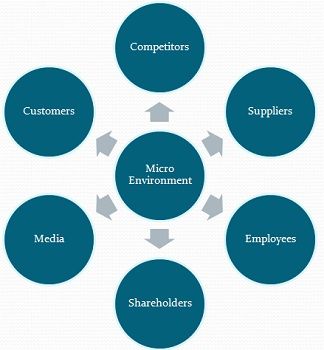
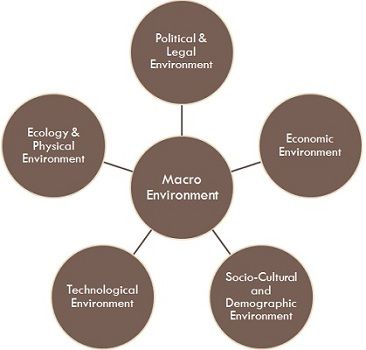
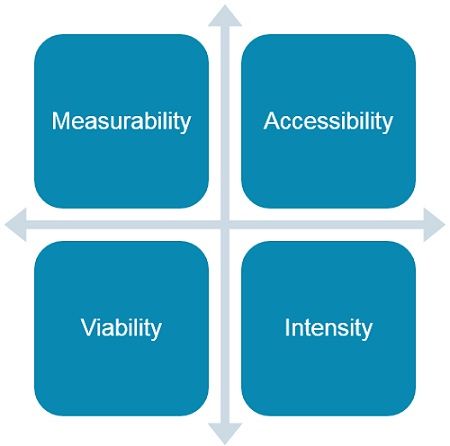
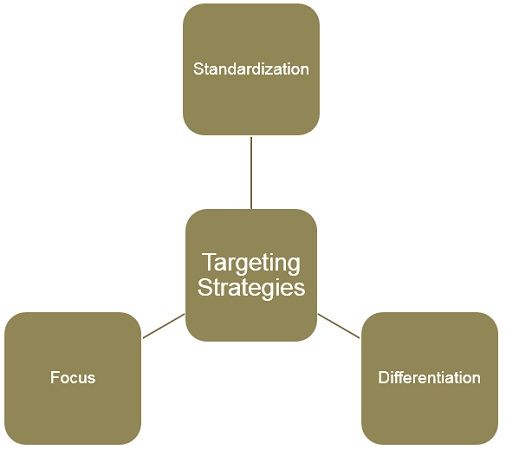

No comments:
Post a Comment